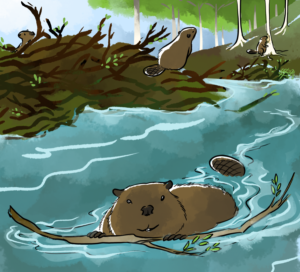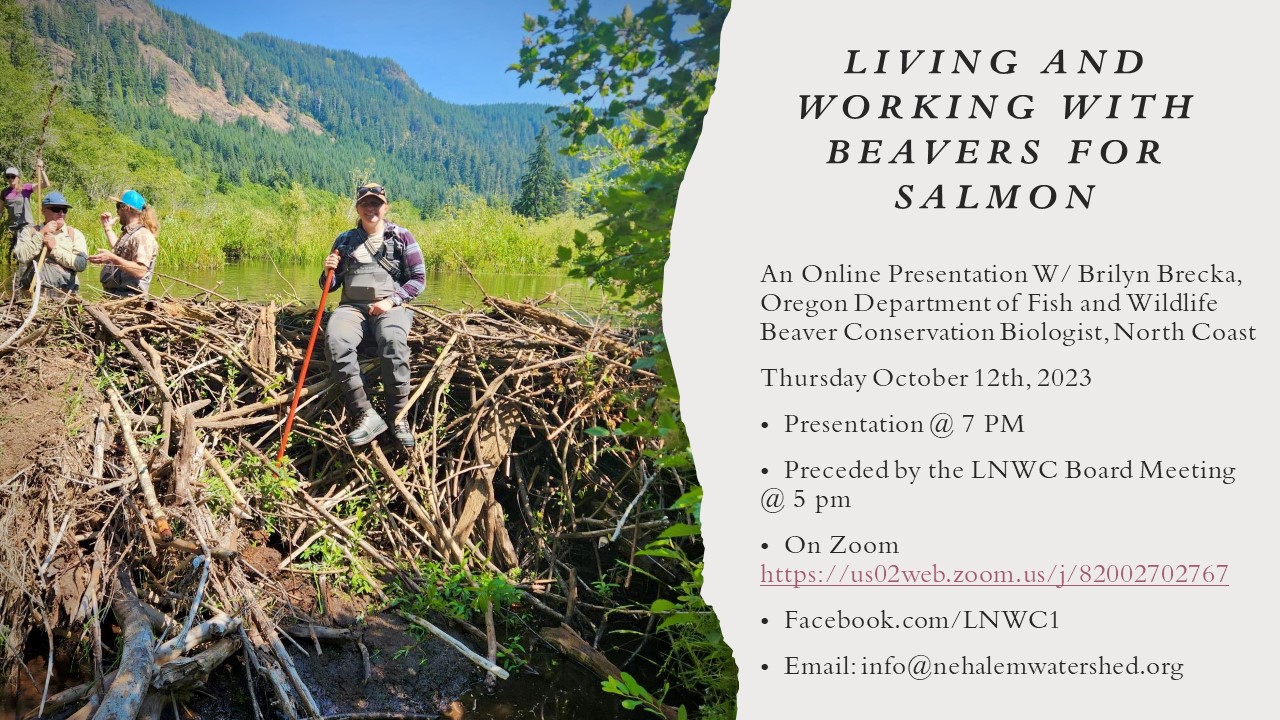You can’t solve a problem that hasn’t happened yet. It’s like trying to have surgery before the cancer sets in. You have to actually let the beavers move in and build a dam before you actually try to make a leak in it,,,
What to do about pesky beavers at Tripp Pond?
Beavers started the initial high-water problems on Tripp Pond, and wildlife officials say they are very likely to return. In anticipation of that, the Tripp Lake Improvement Association has advocated for the use of a “beaver deceiver” at the outlet of the lake. A letter to select association members in late September said Maine Department of Environmental Protection officials suggested applying for a federal permit to install a beaver deceiver.
Association President Robin Rolle wrote in an email to the Sun Journal that once beavers have been reintroduced and the dam partially reestablished, the Tripp Lake Improvement Association will renew its work with the Maine Department of Inland Fisheries and Wildlife to have a beaver deceiver installed at the site.
However, Rob Wood, director of the Bureau of Land Resources within the DEP, wrote in an email to the Sun Journal that “the DEP is not encouraging any specific permit application. In general, DIFW expressed concerns about a beaver deceiver at that site and stated they would not encourage this solution.”
Likewise you can’t apply for a permit before the solution is even needed and you can’t pay in advance for every traffic ticket.
At the site of a working beaver deceiver in Auburn recently, Scott Lindsay, a biologist with the Maine Department of Inland Fisheries and Wildlife, explained why the device is not a workable solution for Tripp Pond.
“It’s a scalability issue,” he said. The site in Auburn is at a culvert under a road, which was flooding because of the beaver lodge. He pointed out there are no homes along the small wetland, no boats, no beaches and no people. “You can install one of these to keep this outlet going. Keep it open and free flowing, which is really what you want in this site.”
“It’s a scalability issue,” he said. The site in Auburn is at a culvert under a road, which was flooding because of the beaver lodge. He pointed out there are no homes along the small wetland, no boats, no beaches and no people. “You can install one of these to keep this outlet going. Keep it open and free flowing, which is really what you want in this site.”
“You (are) talking about a massive structure that now has to be engineered (for that specific location) — not for a 12-inch or a 15-inch pipe. That’s not going to come anywhere close to what you need over there. That is like a 20-foot opening (on Tripp Pond). Yes, and you look at how many millions of cubic yards of water are in that lake. That is something that is far beyond the scale of this. And anything you do over there, one of the first things we have to decide when we put this in is, OK, where is that water level going to be?”
Okay he’s right about that. You can’t put on the band aide before you get the owie. But I wish he would stop referring to beaver dams as HOUSES. If someone put a pipe through your house how cooperative would you be?
Lindsay said he knows beavers are still active in Mud Pond, which is adjacent to Tripp Pond. He said it’s only a matter of time before they return, which is why he suggests a beaver management plan be put in place.
“I would say your best bet is to have some active beaver management in there,” he said. “That includes trapping. It doesn’t mean there’s a goal to eliminate them, but you can always know that they’re there and what they’re doing.”
Clairvoyant trapping. That’s what is needed here. We don’t know when the beavers will come or if they will move in hereor even if they’ll cause a provlem but we need to decide in advance to trap some of them if they do.
It just makes sense.












































